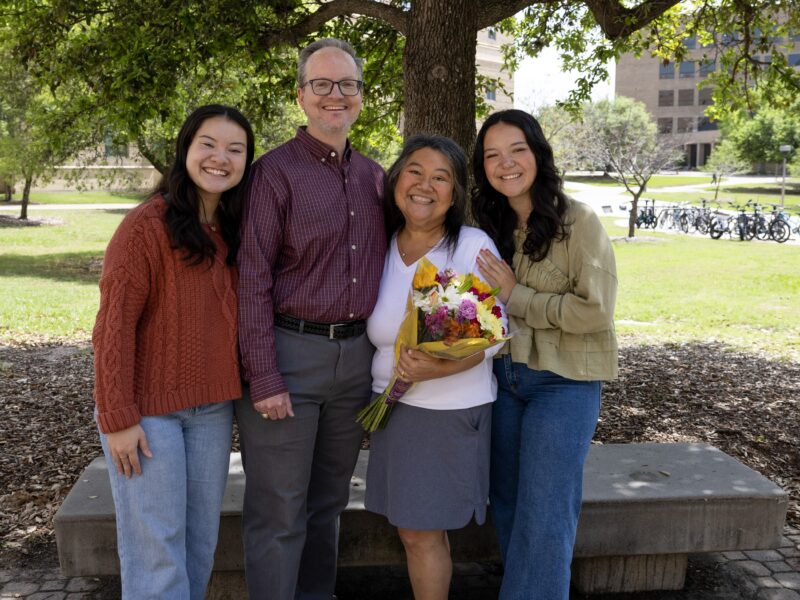Setting The Curve In Biofuels Research
Life fuels life. Living matter, in all its nuance, creates energy for mankind that is a cut above the synthetic. In the form of biofuel, consumers are led back to the earth and sun for everyday solutions.
Four distinct research groups of faculty members within the Artie McFerrin Department of Chemical Engineering at Texas A&M University contribute daily to the momentum surrounding the biofuels industry. Their research and groundbreaking initiatives elevate the discussion of alternative-turned-mainstay fuels.
From niblet to new fuel: The ethanol fermentation process

Dr. M. Nazmul Karim, professor of chemical engineering, department head and T. Michael O’Connor Chair II, relies on a consolidated bioprocessing model (CBP) that genetically engineers microorganisms such as E.colior yeast so as to not require the use of enzymes for ethanol production. Relying solely on cellulose to produce ethanol, his research has produced a whole-cell biocatalyst that is beginning to prove its potential for industry.
With over 230 ethanol plants around the nation, corn-based biofuels invite a serious discussion into the parameters surrounding the food versus fuel controversy. From the use of pesticides to the end-distribution of corn among humans and animals, there are many factors to consider in using food-based biofuels. Alternately, there is a new approach that leads to a reduction in greenhouse gas emissions, specifically the recycling of carbon dioxide into the life-cycle of ethanol production. Switchgrass and sugarcane, containing polymers known as lignincellulose and hemicellulose, are often used in ethanol production. Karim has also made strides in biofuels research pertaining to the sweet potato.
Regarding refuse: Biofuels from waste

Dr. Mark T. Holtzapple, professor of chemical engineering, has garnered interest from media, academia and industry over his assertion that there is vital value in waste. Using the carboxylate platform, one method of bioprocessing, he produces gasoline and jet fuel from refuse that the world otherwise tosses aside. Examples include manure, sewage sludge, municipal solid waste, food scraps and agricultural residues. Economic analysis shows that his biofuels can be sold profitably for $1.00 to $2.50/gallon without subsidies; his scales up the technology at a demonstration plant in Bryan, Texas. In addition to environmental benefits, Holtzapple’s carboxylate platform proposes to reduce reliance on foreign oil and helps develop rural economies.
Holtzapple garnered the top prize in the 2014 Odebrecht Award for Sustainable Development for his project titled, “Production of Gasoline from Municipal Solid Waste by Carboxylate Fermentation.” Recently, he edited a series of biofuels-related articles in Chemical Engineering Processes (March 2015).
By the numbers: Synthesis, optimization and integration with industrial facilities

Dr. Mahmoud El-Halwagi, professor of chemical engineering, holder of the McFerrin Professorship and managing director of TEES Gas and Fuels Research Center, draws upon a synthesis of novel pathways for monetizing and converting biomass to value-added fuels and chemicals. The work involves the efficient assessment and selection of the type of feedstock, products, conversion and processing steps. Through the use of computer-aided tools, El-Halwagi’s research group optimizes existing biorefineries and innovates new ones. Natural resources such as biomass, water and energy can be conserved, whilst continually addressing objectives related to cost, profitability, environmental emissions and safety.
Additionally, “There are numerous opportunities for integrating biorefineries with industrial infrastructure, such as in oil and gas processing. In addition to sharing common facilities, there is potential synergism between bio-based products with fossil-based products,” said El-Halwagi.
Microbes to fuel: Catalysis and reverse engineering

Dr. Katy Kao, associate professor of chemical engineering, relies on microbial systems to produce biofuels, using biocatalyst systems that stress E.coli, for example, into having advanced tolerances. The biocatalyst can have many sources, including foodstocks, and coupled with other processes, the goal is to create a very robust microbe that could then be converted into a biofuel, such as butanol, considered a second-generation biofuel. While it promotes various advantages over ethanol, butanol also has toxic reactions within microbial systems. The production yield [by volume] in industry would be impacted by this toxicity, and such exploration in this area is at the center of her research.
In considering downstream operations and energy conservation, Kao will “work to make these microbes more butanol-tolerant in hopes that it will increase the production of these biocatalysts.” She uses a reverse engineering process to “let nature take its course” as her research groups studies how microbial systems can increase their robust nature when stressed to do so.
Clearly, the nexus of energy solutions is quite complex. The future of biofuels is informed by scholarly research and industrial advances that simultaneously unfold. For more information about studies performed within the Artie McFerrin Department of Chemical Engineering, please see the research portfolio of 2014.





